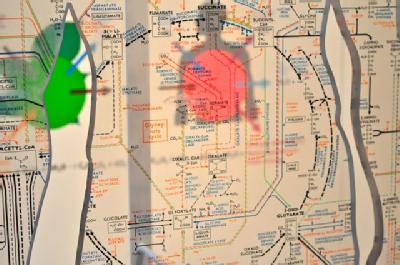Robert Dallmann

Robert Dallmann
Email R.Dallmann@warwick.ac.uk
Google ScholarLink opens in a new window | ORCIDLink opens in a new window | Group WebsiteLink opens in a new window
Trained as a circadian biologist in the group of Stefan Steinlechner in Hannover (DE), and post-docs with N. Mrosovsky (University of Toronto, CA) and Dave Weaver (University of Massachusetts Medical School, US), I became Head of In Vivo Pharmacology for a Swiss Biotech. After re-entering academia and the clocks field in Steve Brown’s group (University of Zurich, CH), I established my own group at Warwick in 2015 in close collaboration with the multi-disciplinary Warwick Chronotherapy Group.
Lay Summary
Biological clocks are in all cells of our body. They modulate most behaviors and physiological processes in our bodies. For example, they determine when we are active and when we rest, but also that we have highest blood pressure just before we wake up.
My research is focused on the interplay between our intricate internal timing system and diseases as well as their treatment. Understanding - on a mechanistic level - how clock disruption can lead to and influence disease progression and treatment is the main focus. The perspective of his work include to improve already existing treatments and to aid in the development of new drugs.
Lay Summary
Biological clocks are in all cells of our body. They modulate most behaviors and physiological processes in our bodies. For example, they determine when we are active and when we rest, but also that we have highest blood pressure just before we wake up.
My research is focused on the interplay between our intricate internal timing system and diseases as well as their treatment. Understanding - on a mechanistic level - how clock disruption can lead to and influence disease progression and treatment is the main focus. The perspective of his work include to improve already existing treatments and to aid in the development of new drugs.
Technical Summary
The principle unit of the circadian timing system is the cell. In mammals, nearly all cells have functional clocks that form a tightly controlled network of clocks. The suprachiasmatic nuclei (SCN) of the hypothalamus function receive environmental light input but also interact with other (peripheral) tissue clocks. While the SCN play a central role in the coordination of the circadian timing system, peripheral clocks have been shown to be essential for various tissue specific functions.
The work in my laboratory is focused on three topics:
Physiological clocks. Here, we mainly focus on central pacemaker. The SCN have a number of interesting network properties that we will address using novel in vivo microscopy techniques. Moreover, we are interested to further elucidate how do cellular clocks in different tissues interact with each other to generate the circadian timing system, which orchestrates physiology.
Pathological clocks and clock pathologies. What is the impact of disease on the clock, on the cellular and on the whole body level? Specifically, we are investigating the effect of cancerous transformation on the clock in cancer cells and the impact of chronic diseases like cancer on the function of the circadian timing system. Ultimately, this programme of work should also generate further evidence on the adaptive value of the circadian clock mechanism.
Chronotherapy. As part of the Warwick Chronotherapy Group (link to group webpage), we help to establish novel treatment schedules for cancer pharmacotherapy. Previously, it has been shown that timed dosing of cancer chemotherapy is beneficial for patients if their circadian timing system has been taken into account. Together with mathematical modelling of the underlying pharmacokinetic processes, we will address this issue for various standard chemotherapeutic drugs using in vitro and in vivo experimental models.
Selected Publications
- Vlachou et al. 2024. TimeTeller: a tool to probe the circadian clock as a multigene dynamical system. PLoS Computational Biology, DOI: 10.1371/journal.pcbi.1011779.Link opens in a new window
- Smith et al. 2022. Cell-type specific circadian bioluminescence rhythms recorded from Dbp reporter mice reveal circadian oscillator misalignment Journal of Biological Rhythms, DOI: 10.1177/07487304211069452Link opens in a new window.
- Jagannath et al. 2021. Adenosine integrates light and sleep signalling for the regulation of circadian timing in mice. Nature Communications DOI: 10.1038/s41467-021-22179-zLink opens in a new window.

